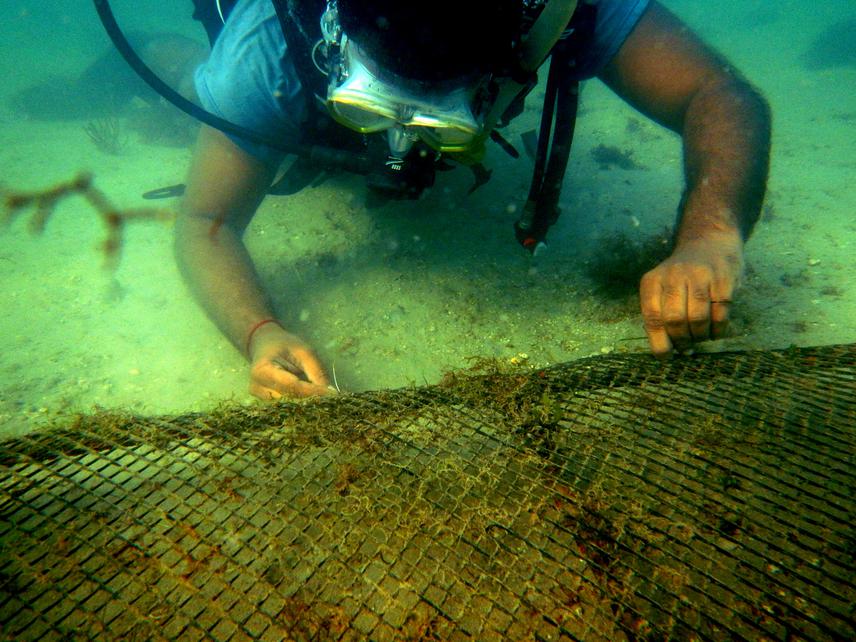Devendiran Adhavan
The aim of this project is to develop successful technology to recover the seagrass habitats through transplantation process. The seagrass habitat will act as refuge and food for fishes and stabilizes the sedimentation. The considerable growth of seagrass habitats plays important role in carbon sequestration. Successful completion of this project gives an idea on seagrass transplantation methodology that suits Indian waters.

Planting of sea grass in the nursery.
Seagrass is the only flowering plants that usually colonize soft-bottom areas of the oceans from the tropics to the temperate zones. Seagrass provides a range of ecosystem services including a check on water quality, habitat and food for many marine organisms. They also play a vital role in balancing of the ecosystem. In many coastal areas, seagrass beds are threatened by human activities such as construction and dredging, anchoring, habitat conversion, pollution, and climate change. Due to loss of seagrass habitats in India, the population of Dugongs, sea turtle, and other commercially important fishes are drastically affected. Restoration by introducing vegetative plants or seeds of the suitable seagrass into the areas that were previously colonized by seagrasses is the only process to speed up the recovery of seagrass meadows. Developing technology for successful seagrass restoration would be a first attempt in India to conserve seagrass habitat in the Marine Protected Areas of India. Restoration work is also helping to increase the fish diversity as it acts as a hiding place for juvenile fishes and egg. After successful growth of seagrasses in the nursery site, the grown seagrasses can act as a donor for the other recipient sites for restoration. Developing a proper technique for seagrass restoration would be carried out at the nursery site near to the existing seagrass bed. The spawning season and the suitable species for restoration would be studied based on the restoration and donor sites. A grid of soft iron mesh with the support of small cement blocks or boulder stones at four corners will be formed for seagrass restoration process. The seagrass seedlings/rhizome will be protected by thin iron mesh to combat erosion due to water movement.
Further, a study will be carried out to discover suitable anchoring methods for rhizome before transplanting technique can be fully evaluated. The rhizomes of the donor sea grass will be inserted into the sediment approximately 5 cm deep and held with the help of plastic coated steel clips in between the mesh. The plantation of Rhizome will also be carried out in peat pot which will be held in between the iron mesh and cement block grid. Different methods will be carried out to find the suitable technique. Fishermen community will be engaged in the seagrass restoration work. In addition to that, awareness programs on the importance of seagrass will be organized for school and college students and fishermen community as a part of Nature Education Camps.
Header: Construction of nursery at the sub tidal region.